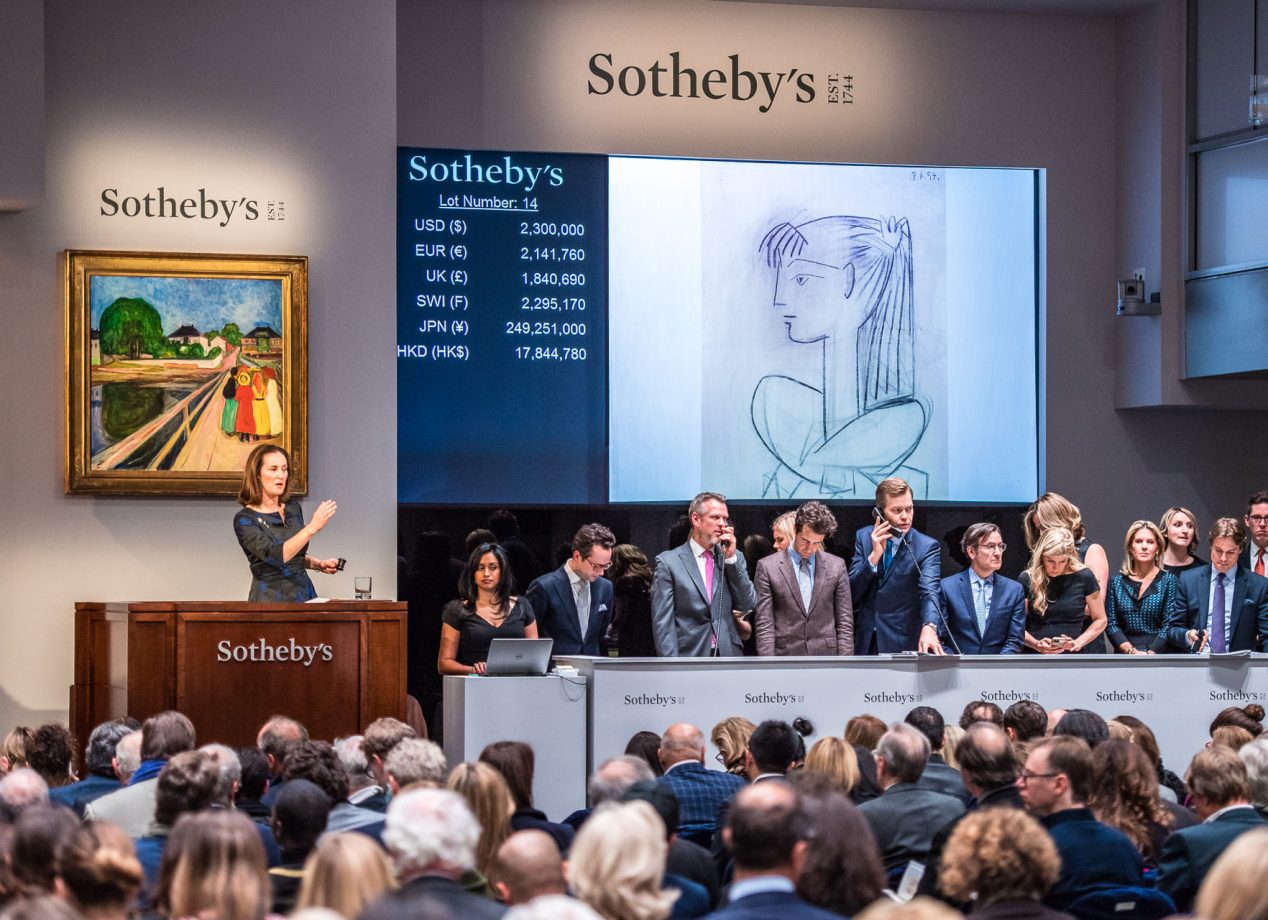The contemporary art world is undergoing rapid transformation, shaped by technological innovation, economic shifts, and cultural policies. Read on for the top five trends in contemporary art today.
Experts from Sotheby’s Institute of Art—David Bellingham, Program Director of the MA Art Business; Dr. Melanie Fasche, Deputy Program Director of the MA Art Business; Dr. Marina Maximova, Faculty Member of the MA Art Business; and Dr. Oliver Petersen Gilbert, Senior Lecturer in Art Market Studies—discussed key trends shaping the global art market today on The Art Business podcast.
1. The Rise of Digital Art and AI
One of the most significant trends in contemporary art is the increasing integration of digital technology. From AI-generated artworks to blockchain-backed digital assets like NFTs, technology is redefining artistic production, ownership, and valuation.
“What we can observe, beyond the NFT boom in 2021-22, is that institutions have essentially been catching up and creating the history of digital art, connecting it more to a broader contemporary art canon…Blockchain technology has helped us with this because it enables us to authenticate and provide provenance for digital art, which only exists digitally,” Dr. Melanie Fasche told the group. As digital platforms expand, artists are finding new ways to engage with global audiences outside of traditional gallery spaces.
2. Financialization of Art
Art is increasingly being treated as an investment asset, much like real estate or stocks. Fractional ownership, where multiple investors own shares of an artwork, is gaining traction, making high-value pieces more accessible.
“The financialization of all of our lives and the role of speculative investment are shifting how the arts and the art market are understood. Art is increasingly being treated as an asset form, changing the dynamic of cultural investment and valuation,” Dr. Oliver Petersen Gilbert shared. This financialization has led to greater speculation in the market, with some questioning whether art remains a cultural product or is becoming primarily a financial commodity.
3. Global Expansion of the Art Market
While Western art hubs like London and New York remain dominant, emerging markets are gaining influence. Countries in Central Asia and the Caucasus are seeing increased participation in international art fairs and exhibitions.
“There is a growing interest from both national and international buyers... More interest and visibility for artists [is] coming from the former Soviet countries,” Dr. Melanie Fasche told her colleagues. This trend indicates a shift toward a more decentralized and inclusive global art market.
4. The Influence of Private Collectors and Patronage
Private collectors have become a dominant force in the contemporary art market, accounting for approximately 80% of purchases. Their influence extends beyond acquisition, as their preferences and investments shape artistic trends, exhibition programming, and even the careers of emerging artists.
“There has been a recalibration around the primacy of the market across the entirety of the cultural sector. This is connected to issues around funding, but also to the growing influence of private investment, which increasingly dictates which artists and institutions receive support,” Dr. Oliver Petersen Gilbert shared.
This growing role of private patronage raises questions about the balance of artistic freedom, institutional support, and market-driven valuation. As public funding for the arts fluctuates, private collectors continue to play a crucial role in defining the landscape of contemporary art.
5. Sustainability and Ethical Art Practices
Environmental consciousness is also playing an increasingly important role in contemporary art. Artists and institutions are rethinking material use, exhibition logistics, and carbon footprints.
“When we talk about sustainability, we have to consider the energy consumption of blockchain, NFTs, and digital art. There is a lot of energy that goes into these technologies, and this is why there has been backlash against NFTs, despite their initial promise,” Dr. Marina Maximova shared.
Sustainable practices, such as using eco-friendly materials and reducing waste in production, are becoming more prevalent, reflecting broader societal concerns about climate change.
Listen to The Art Business podcast on PodBean.
